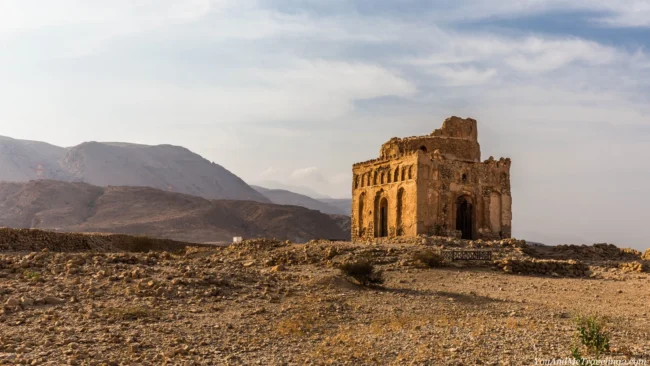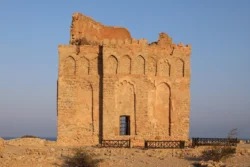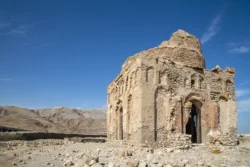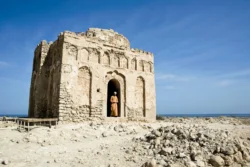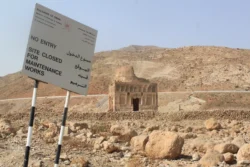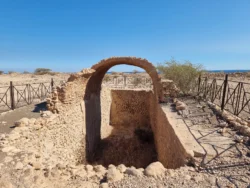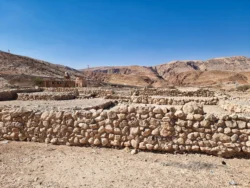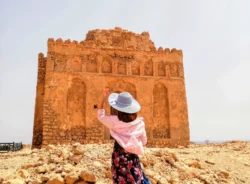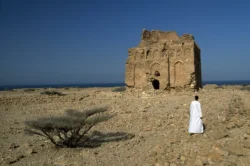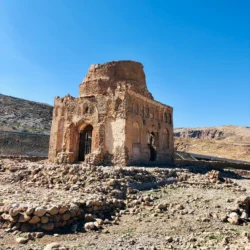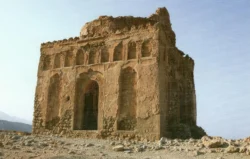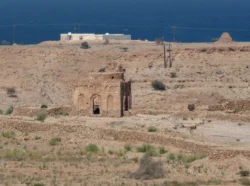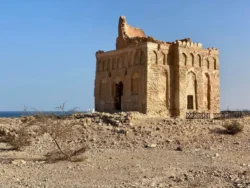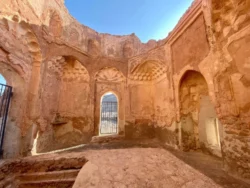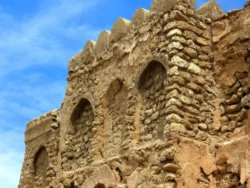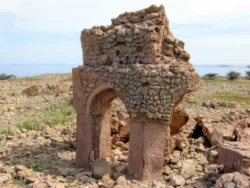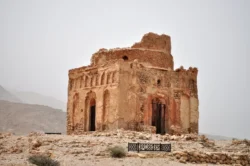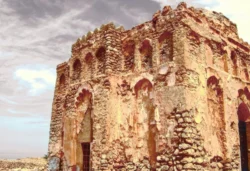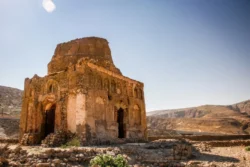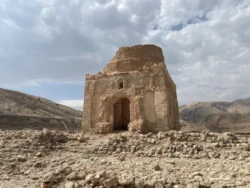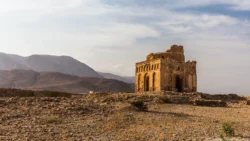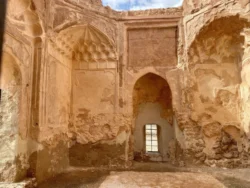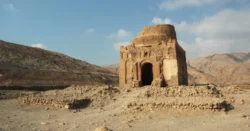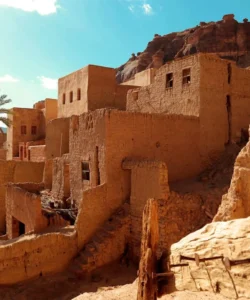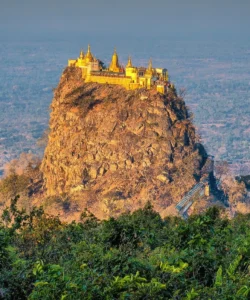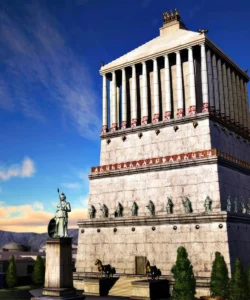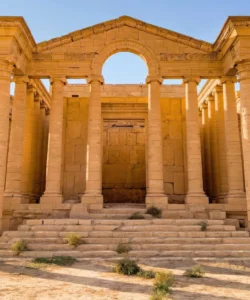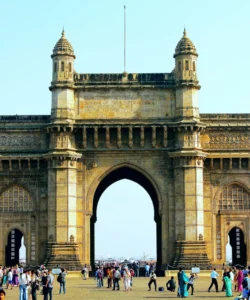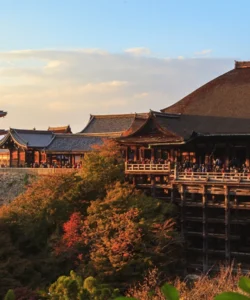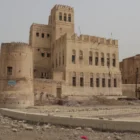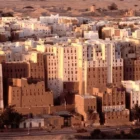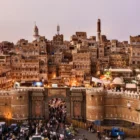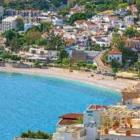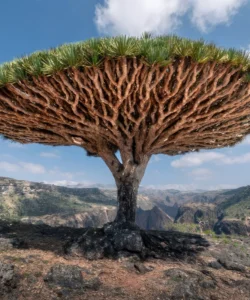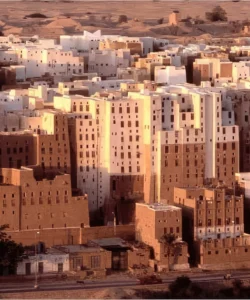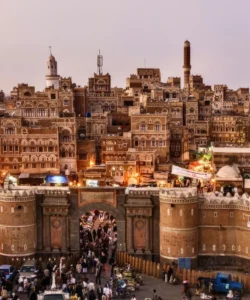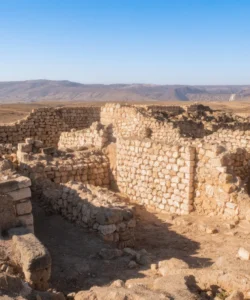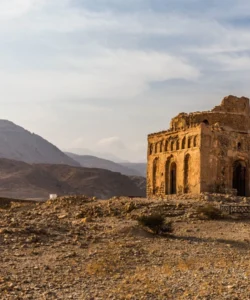The Ancient City of Qalhat, a UNESCO World Heritage Site, is a fascinating archaeological ruin on Oman’s eastern coast. Once a pivotal port city of the Kingdom of Hormuz, it played a crucial role in the Indian Ocean trade network from the 11th to the 16th century CE, connecting Arabia with India, East Africa, and even China.
Listen to an introduction about Ancient City of Qalhat
Name and Address
- Name: Ancient City of Qalhat (Arabic: قلعة قلهات), historically referred to as Calatu by Marco Polo.
- Address: Located on the eastern coast of the Sultanate of Oman, approximately 20km north of the city of Sur, and about 177km south of Muscat in the Al Sharqiyah South Governorate.
How to Get There
The Ancient City of Qalhat is an archaeological site, and while the main site is currently closed for excavations, parts can still be viewed.
- By Car: Driving is the most convenient way. From Muscat, take Route 17 towards Sur. The site is visible from the highway, and you can spot the prominent Bibi Maryam Mausoleum between the road and the coast. There’s a small lay-by on the highway (coming from Sur towards Muscat) that offers a good vantage point for viewing the ruins from a distance.
- Restricted Access: The main archaeological site is currently undergoing excavation and is generally closed to the public for direct entry. A visitor center is planned for the future. However, you might be able to walk up a hillside track to a barrier to get a closer view of the mausoleum and some parts of the old city. Locals in the nearby modern village of Qalhat can sometimes provide guidance.
- Organized Tours: Some tour operators from Muscat or Sur may include a stop to view Qalhat as part of a wider itinerary, especially for those interested in Oman’s historical trade routes.
Landscape and Architecture
The Ancient City of Qalhat is a sprawling archaeological landscape, offering insights into medieval Islamic urban planning and trade architecture.
- Coastal Location: The city is situated on a narrow, triangular coastal rocky plateau, separated from the sea by a cliff approximately 10-15 meters in height. It overlooks the Gulf of Oman, emphasizing its historical role as a maritime hub.
- Extensive Ruins: The site covers approximately 35hectares and includes the remnants of inner and outer city walls, residential areas, workshops, and necropolises. While much of the city is reduced to rubble heaps from centuries of weathering, erosion, and seismic activity, aerial views reveal a distinct urban pattern.
- Bibi Maryam Mausoleum: The most prominent and often the only standing structure visible is the Mausoleum of Bibi Maryam. This 14th-century tomb, though now lacking its dome, is an architectural masterpiece of the Islamic Middle Ages, showcasing complex techniques for setting a dome on a square plan. Historical accounts describe it as originally covered with blue ceramic tiles.
- Urban Layout: Archaeological investigations have revealed a structured urban plan with distinct quarters. The central quarter, located between two wadis (seasonal riverbeds) within the city walls, was the oldest part and housed administrative buildings, the Friday Mosque, and a souq. Other peripheral quarters, like the northeast quarter, featured straight streets connecting the harbor to city gates.
- Water Supply System: The city relied on a sophisticated water system, including cisterns and wells, to sustain its population, drawing water from rain, streams, and surrounding mountain oases.
- Construction Materials: Buildings were typically constructed using local materials like mud, corals, and seashells, reflecting the availability of resources due to the city’s coastal proximity. Evidence also suggests the use of wooden beams embedded in walls as an anti-seismic construction method.
What Makes It Famous
The Ancient City of Qalhat holds significant historical and cultural fame for several reasons:
- UNESCO World Heritage Site: It was inscribed on the UNESCO World Heritage List in 2018, recognized for its outstanding universal value as a unique testimony to the Kingdom of Hormuz and its role as a major trading hub.
- Key Indian Ocean Trade Port: From the 11th to the 16th century, Qalhat was one of the most important Islamic commercial hubs on the Indian Ocean trade network. It facilitated the exchange of goods such as horses, dates, incense, pearls, spices, silk, and porcelain between India, East Africa, China, Southeast Asia, and the Arabian Peninsula.
- Second Capital of Hormuz: Qalhat served as a seasonal residence and effectively the “second capital” of the powerful Kingdom of Hormuz, providing shelter for its princes during times of conflict and acting as a regional power center.
- Mentioned by Famous Travelers: Its importance is underscored by mentions from renowned historical travelers like Marco Polo (who called it “Calatu”) and Ibn Battuta, who described its “fine bazaars and one of the most beautiful mosques” with walls covered in blue ceramic tiles.
- Architectural Significance: The site provides physical evidence of architectural features influenced by its cosmopolitan nature, reflecting a blend of local and external cultural interchanges. The Bibi Maryam Mausoleum is a particularly notable example of medieval Islamic architecture.
- Archaeological Significance: Since its rediscovery in 2003 and subsequent excavations, the site has yielded significant archaeological data, offering insights into the city’s urbanism, daily life, and extensive trade activities through numerous pottery finds from various origins.
Differences from Some Other Attractions
The Ancient City of Qalhat offers a distinct historical experience compared to other Omani attractions:
- Archaeological Ruins vs. Restored Forts: Unlike actively restored and publicly accessible forts like Bahla Fort or Nizwa Fort, Qalhat is predominantly an archaeological ruin. While the Bibi Maryam Mausoleum stands, much of the city requires archaeological interpretation, offering a different kind of historical exploration focused on unearthed remains.
- Maritime Trade Focus: While many Omani historical sites have defensive or administrative roles, Qalhat’s fame is almost exclusively tied to its function as a major medieval maritime trading port. Its layout and discovered artifacts strongly emphasize its commercial significance rather than military might (like Al Jalali Fort).
- Kingdom of Hormuz Connection: Qalhat provides a unique direct testimony to the Kingdom of Hormuz, a powerful entity that dominated regional trade. This connection offers a different historical narrative compared to forts primarily associated with local Omani tribes or Portuguese colonial history.
- Extensive Unoccupied Site: The city was largely abandoned in the 16th century following Portuguese attacks and has never been reoccupied. This lack of continuous habitation has preserved its archaeological layers, providing a unique snapshot of a medieval city, unlike many other sites that have seen continuous or successive occupations.
- Focus on Scholarly Excavation: Given its status as an ongoing archaeological project, a visit to Qalhat offers more of a glimpse into an active historical discovery process, with future plans for a visitor center to present findings, rather than a fully developed tourist attraction.
Ancient City of Qalhat Photos:
